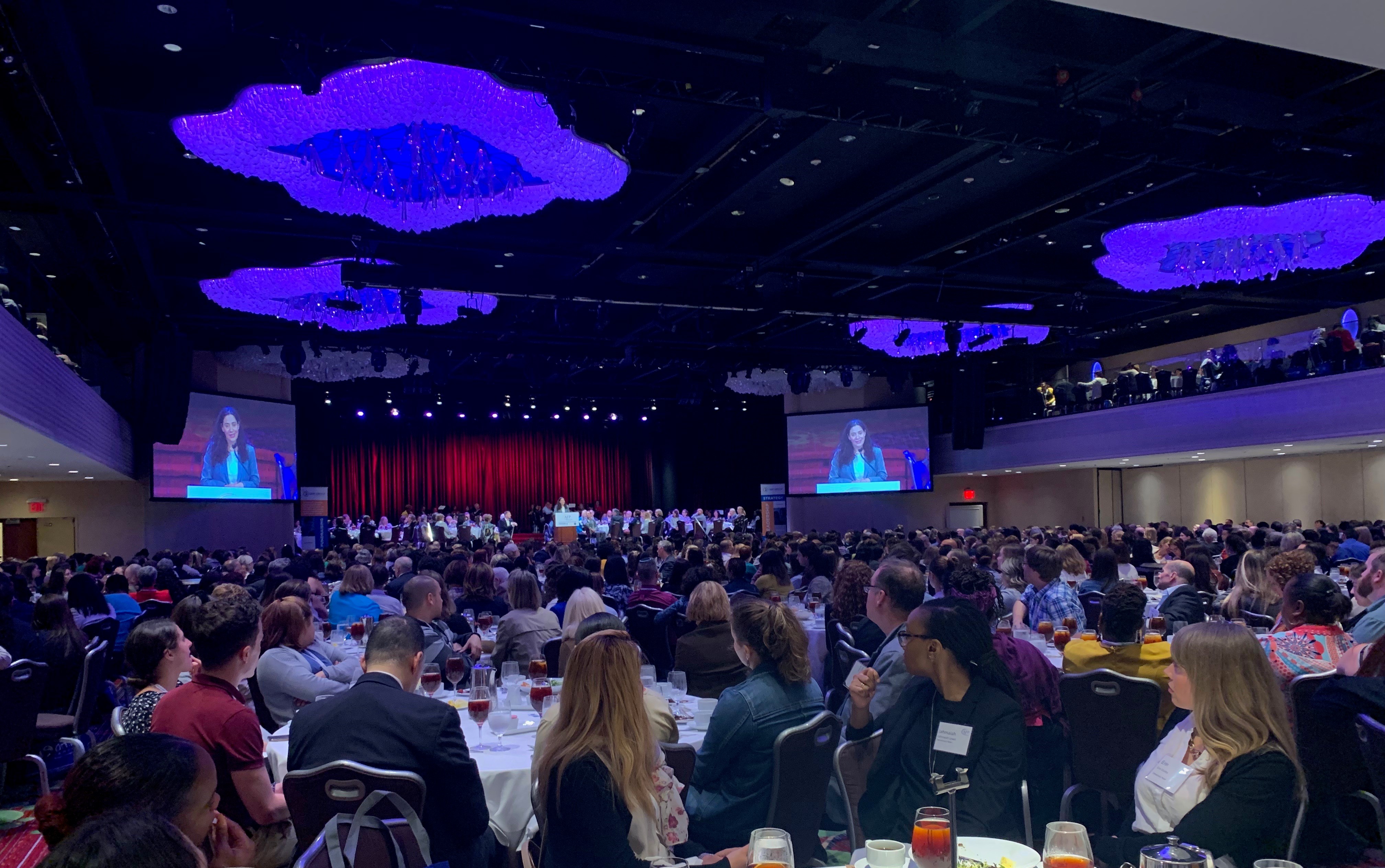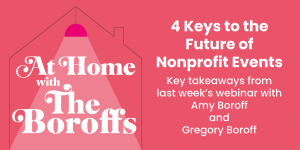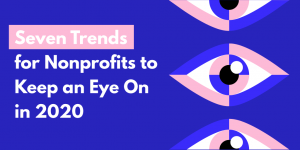Fundraisers know how hard it can be to cut through the noise. But it takes more than a well-planned communications strategy to make an impact. Nonprofits that engage with their audience more effectively all have one thing in common. They have a clear picture of their purpose and an understanding of their nonprofit’s identity. This is crucial for developing your position in an overcrowded space.
Amplifi president, Jesse Park, recently led a panel discussion at Fundraising Day in New York focused on how nonprofits can make their message stand out. Park was joined by Kwaku Farrar, the Outreach Manager of the 9/11 Tribute Museum/Sept. 11 Families’ Association, Alexandra Villano, the Vice President of Development at the Greyston Foundation, and Wayne Ho, President and CEO of the Chinese American Planning Council.
The session was part of FRDNY’s first ever Marketing and Communications track and drew a crowd that filled the Julliard Room at the Marriot Marquis in NYC.
The Challenges Facing the Panel
The speakers on the panel represented nonprofits that varied greatly in size and scope of work. But they are not alone in the challenges they face.
Whether you’re part of an organization like the CPC with 5,000 employees, the 9/11 Tribute Museum with a staff of less than 20 and a large volunteer base, or a multi-faceted organization like the Greyston Foundation, you’re nonprofit has likely encountered many of these same issues:
- Connecting the dots on various service lines
- Handling an evolving client base
- Competition from a more well-known organization
Many organizations struggle with developing their position for the same reasons. But your challenges are part of what makes your nonprofit’s identity. So, it’s important to understand what you’re up against and consider how these challenges will shape your organization before going forward.
Let’s take a look about what the experts had to say about establishing your nonprofit’s position in an overcrowded space:

Getting to the Core of Your Mission
“Our mission, which was revised within the last five years, is to create thriving communities with the practice and promotion of open hiring. What does that really mean? Really boiling it down it means job opportunities, no questions asked.” – Alexandra Villano, Greyston Foundation
Evolving with Your Mission
“We’ve evolved in that we don’t only focus on sharing personal stories in our museum space. We’ve made a foray into education because we’ve realized that [9/11 is] not being taught in schools. We made an effort to get the government to make this mandatory. It wasn’t successful, so we took the responsibility and have created programming and almost become a service provider for educators through the use of these personal stories.” – Kwaku Farrar, 9/11 Tribute Museum/Sept. 11 Families’ Association
“There was so much interest in what we were doing at the bakery from other businesses that we saw the opportunity to create impact by bringing our open hiring practices to other businesses.” – Alexandra Villano, Greyston Foundation
Knowing When it’s Time to Rebrand
“It’s not just because I was like ‘hey, let’s do something new!’ It’s because when I did my listening tours to current staff, there were a lot of suggestions that the staff had about how to better talk about CPC and their wish list of how people should see us as an organization. I thought that it was really important that there was a desire amongst our staff to make sure that we have a more unified message and identity.” – Wayne Ho, Chinese American Planning Council
Getting Everyone on the Same Page
“For me a rebrand also involves the culture change. If you don’t have the buy in from everybody on your team when you actually are executing your plan, it’s not going to resonate with the public. It’s an ‘if you don’t believe in yourself, who’s going to believe in you’ type of thing.” – Kwaku Farrar, 9/11 Tribute Museum/Sept. 11 Families’ Association
“We now do quarterly all-staff meetings. Those are opportunities for us to do trainings as well as organizational policy updates. But we made sure that we built in professional development during the all-staffs, so we could show them the new talking points, the new branding, the new messaging, and new collateral.” – Wayne Ho, Chinese American Planning Council
Using Data to Refine Your Strategy
“Look at who’s engaging with what, and tailor your message to those people,” Farrar said. “People think ‘OK, we have to be on social media. We’re just going to put every element on social media.’ But you don’t know who you’re trying to reach. You’re just kind of throwing things at a wall, hoping something sticks.” – Kwaku Farrar, 9/11 Tribute Museum/Sept. 11 Families’ Association
“The first thing my policy person did when she showed up was take all the addresses of our staff and all the addresses of our 60,000 community members and found out which congressional district, state assembly, state senate, city council district they live in. All of a sudden, we found out of the 60,000 New Yorkers we serve, we have thousands of people coming from the Bronx and Staten Island to our programs because they can’t find other programs from people who speak their language,” – Wayne Ho, Chinese American Planning Council

Speaking to Different Audiences
“When we are engaging with a business, or a company, or another institution around this idea of potentially adopting open hiring, or some derivative of it, we’re usually leading with the business case and speaking the business language that’s going to help them understand that there is a cost savings to doing open hiring. We might lead with the [social impact case] when we’re talking to a funder or a foundation and talk about how there’s this real business solution that has the possibility of making a difference in hundreds of thousands of people by creating access to employment.” – Alexandra Villano, Greyston Foundation
Standing Out in the Media
“Because of our relationships, we are very proactive on the media side. So that’s more press releases, more policy statements. But in addition to sending these out and updating our databases, we reach out to all of our contacts. The reality is, we could send out an email of our Chinese press release, and all the Chinese press would show up. It doesn’t matter what the coverage is, they’ll show up. And they should, because an ethnic newspaper should cover community issues. But you know, that’s not how you get into the Times, that’s not how you get on TV and the mainstream press.” – Wayne Ho, Chinese American Planning Council
Don’t Get Comfortable
“This is an ever-evolving process. Just because you’re here today and you’re at a certain place doesn’t mean that two years from now you don’t have to re-look at it. It’s a constant evaluation of where you are, where you want to be, and how do you get your message out. It really is a constant evolution.” – Jesse Park, amplifi




